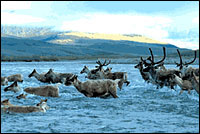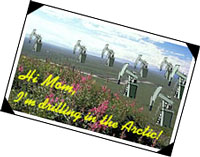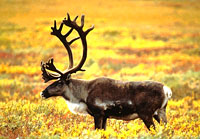Alaska
-
The Bush administration lets a profitable energy-efficiency program lapse
As of yesterday, Oct. 1, the most successful program in U.S. history for improving energy efficiency in federal buildings is toast. The demise of the Energy Savings Performance Contracting program is no insignificant matter, seeing as how the federal government is the single biggest energy-user in the nation. Taxpayers spend $4 billion per year to […]
-
The Three Amigos
Three Major Companies Join Fight to Protect Tongass Office supply giant Staples and building companies KB Home and Hayward Lumber have joined with environmentalists in opposing a Bush administration proposal that would allow roads and development in southeast Alaska’s pristine Tongass National Forest. The three companies, all big users of wood products, have been working […]
-
Rubber Ducky, You’re the $100
Thanks to “Sesame Street,” everybody over the age of two knows that rubber duckies make bath time lots of fun — but who knew the little yellow guys could make oceanography a bit more fun, too? Eleven years ago, a shipping container carrying 29,000 rubber bath toys (frogs, turtles, and beavers, as well as the […]
-
Pain in the Tongass
Moderate Republicans, as well as Democrats and environmentalists, are up in arms over eleventh-hour language added by Sen. Ted Stevens (R-Alaska) to a huge $395 billion spending bill that would boost logging in Alaska’s Tongass National Forest. The provision would exempt nearly 2 million acres in the Tongass from a rule approved by former President […]
-
Domestic oil and gas is not the ticket to U.S. energy security
America’s fragile domestic infrastructure threatens her energy security at least as much as dependence on oil from the Middle East. Replacing oil from that region with even more vulnerable domestic systems would therefore decrease energy security. Stranger than science fiction. Extraordinarily concentrated energy flows invite and reward devastating attack. In our 1982 Pentagon study Brittle […]
-
A review of Arctic Refuge
First, the facts. The Arctic National Wildlife Refuge covers about 19 million acres in northeastern Alaska, almost all north of the Arctic Circle. It was created in 1980 by the Alaska National Interest Lands Conservation Act, which renamed and more than doubled the size of an existing wildlife range, designated about 8 million acres within the refuge as wilderness, and prohibited oil and gas production in the refuge unless authorized by Congress.
-
The case for oil exploration in the Arctic National Wildlife Refuge
Who doesn’t want to drill for oil in the Arctic National Wildlife Refuge? It’ll be fun! We will wear special outfits, and when the oil gets in our mustaches, we’ll take silly pictures and send them as postcards. The future, now more than ever, is a vast, inky utopia. Babies will squeal with delight and […]
-
The Arctic Refuge could become Bush's gays-in-the-military
California’s energy crisis has become a national Rorschach test, saying more about the viewer than about the ink blot. President Bush is a special case: He looks at the deregulation crisis and sees the need to drill for oil in Alaska’s Arctic National Wildlife Refuge. Caribou-hoo-hoo. Photo: USFWS. Of course, given the number of oil […]
-
Sea lions escape with protections for now
The drama of the presidential election, they say, has awakened the interest of the public, and especially of young people, in the democratic process. So welcome, young people, to the entertainment that never ends. Once the question “who won?” is settled, other questions begin. What are the people who won up to? For whose benefit? […]



